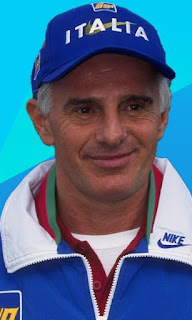Lorenzino de’ Medici - assassin
Mystery over motive for killing cousin
Lorenzino de’ Medici, who became famous for the assassination of his cousin, the Florentine ruler Alessandro de’ Medici, was born on this day in 1514 in Florence. The killing took place on the evening of January 6, 1537. The two young men - Alessandro was just four years older - were ostensibly friends and Lorenzino was easily able to lure Alessandro to his apartments in Florence on the promise of a night of passion with a woman who had agreed to meet him there. Lorenzino, sometimes known as Lorenzaccio, left him alone, promising to return with the woman in question, at which point Alessandro dismissed his entourage and waited in the apartments. When Lorenzino did return, however, it was not with a female companion but with his servant, Piero, and the two attacked Alessandro with swords and daggers. Although a struggle ensued, they killed him. The motive has been debated for centuries. One theory was that it was an act of revenge following a legal controversy the previous year, when Alessandro sided against Lorenzino in a dispute over the inheritance of his great, great grandfather, Pierfrancesco the Elder. Read more…
__________________________________________________________
Ugo Tognazzi - comic actor
Achieved international fame through La Cage aux Folles
Ugo Tognazzi, the actor who achieved international fame in the film La Cage aux Folles, was born on this day in 1922 in Cremona. Renowned for his wide repertoire in portraying comic characters, Tognazzi made more than 62 films and worked with many of Italy's top directors. Along with Vittorio Gassman, Alberto Sordi and Nino Manfredi, Tognazzi was regarded as one of the four top stars of commedia all'italiana - comedy the Italian way - in the 1960s and 1970s. In 1981 he won the award for best actor at the Cannes International Film Festival for his role in Bernardo Bertolucci's Tragedia di un Uomo Ridicolo (The Tragedy of a Ridiculous Man). His work was widely acclaimed in Italy, but it was not until he was cast in the role of homosexual cabaret owner Renato Baldi in the French director Édouard Molinaro's 1979 movie La Cage Aux Folles that he became known outside Italy. The film became in its time the most successful foreign language film ever released in the United States, with box office receipts of more than $20 million. The film spawned two sequels in which Tognazzi reprieved the role of the mincing Baldi, who in the story was the joint owner of a night club in St Tropez that specialised in drag acts. Read more…
__________________________________________________________
Franco Battiato – singer-songwriter
Long career of a musical philosopher
One of the most popular singer-songwriters in Italy, Franco Battiato, was born on this day in 1945 in Ionia in Sicily. Nicknamed Il Maestro, Battiato has written many songs with philosophical and religious themes. He has also had a long-lasting professional relationship with Italian singer Alice, with whom he represented Italy at the 1984 Eurovision Song Contest. Battiato graduated from high school at the Liceo Scientifico Archimede in Acireale, a city in the province of Catania in Sicily. He went to Rome and then moved on to Milan, where he won his first musical contract. After his first single, La Torre, was released, Battiato performed the song on television. After some success with the romantic song E l’amore, he released the science fiction single La convenzione, which was judged to be one of the finest Italian progressive rock songs of the 1970s. The albums of electronic music he produced in the ‘70s, obscure at the time, are now sought after by collectors. His popularity grew after he moved away from progressive rock to a more mainstream pop style, producing music that was regarded as elegant, yet easy to listen to. Read more…
__________________________________________________________
The founding of the Italian Fascists
Mussolini launched party at 1919 Milan rally
Italy's notorious dictator Benito Mussolini officially formed what would become known as the National Fascist Party on this day in 1919 at a rally in Milan's Piazza San Sepolcro. A war veteran and former socialist activist who had moved towards a more nationalist political stance, Mussolini initially drew his followers together as the Fasci Italiani di Combattimento (Italian Combat Group). This group evolved into the Partito Nazionale Fascista (PNF) two years later, sweeping to power in 1922 when King Victor Emmanuel III, fearing civil war after 30,000 of Mussolini's supporters, the Blackshirts, marched on Rome, asked Mussolini to form a government. Born the son of a blacksmith in Predappio, in Emilia-Romagna, Mussolini had been an active socialist, first in Switzerland, where he had moved as a 19-year-old to seek work and avoid military service, and again when he returned to Italy. He became a leading figure in the Italian Socialist Party (PSI) and edited the left-wing newspaper Avanti. But he was expelled by the PSI because of his opposition to the party's neutral stance on the First World War. Read more…















